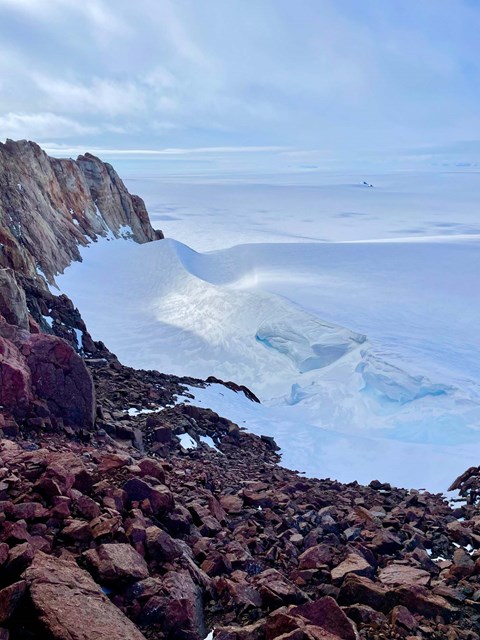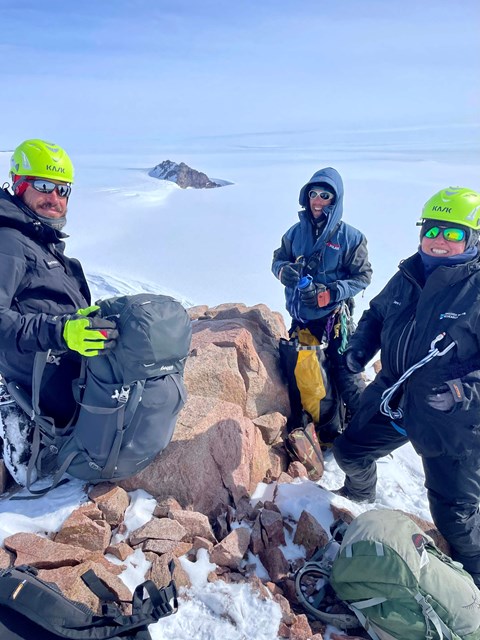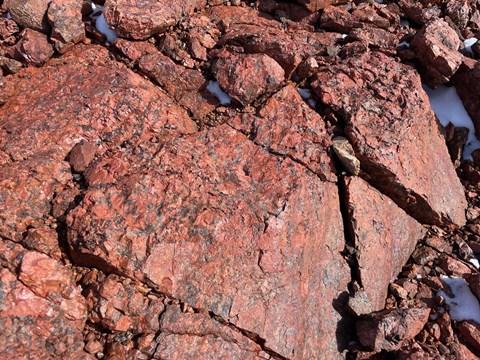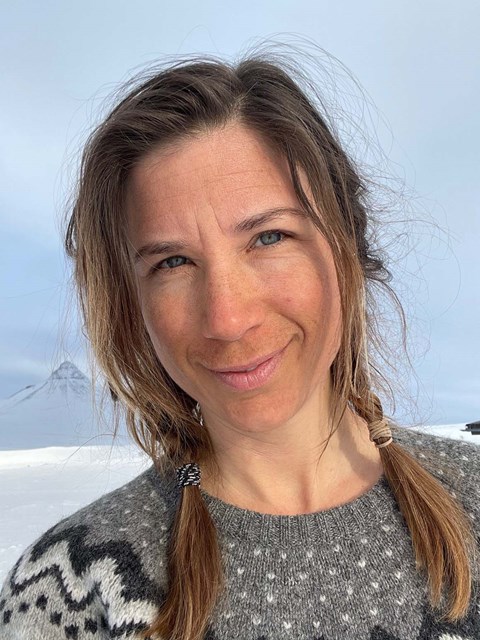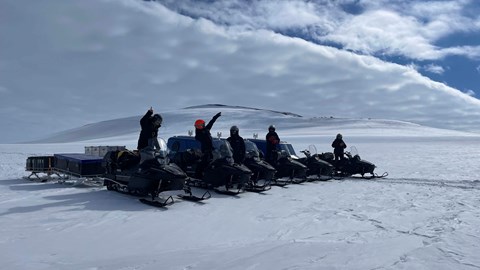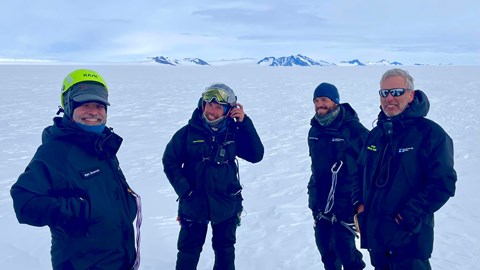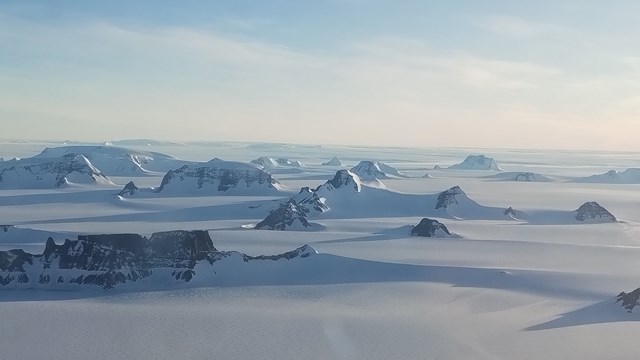To Mannefallknausane
 First nunatak for sampling. Nameless on the map but I call it Vångafjället after the red granite that reminds me of the one from Vånga in Skåne. Photo: Karna Johansson
First nunatak for sampling. Nameless on the map but I call it Vångafjället after the red granite that reminds me of the one from Vånga in Skåne. Photo: Karna Johansson
Text by: Karna Johansson, expedition doctor
The researchers had a few days at Wasa to take care of the rock samples. In the meantime, our fantastic technicians were busy with snowmobiles, arks, and electronics. Everything was repaired, from leaking seals and sad engines to radio antennas and arks.
My contribution was to disassemble and darken the valves in the ceiling of the arks, which, thanks to the midnight sun, shine like spotlights throughout the night. Sleep is essential for recovery.
Dirty laundry and people were washed, and Linda spoiled us with a three-course dinner and cookies for coffee.
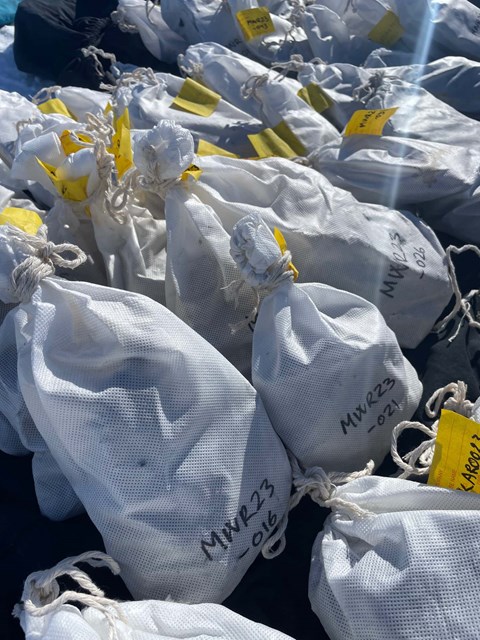
But soon, the maps were brought out, and the next expedition was planned. Food, sweets, and, not least, coffee was packed and loaded for three weeks in the field. Tracks were adjusted and transferred to GPS units, and weather checks were made for as many days as possible.
Last Sunday, our field expedition with six people set course southwest. The goal is to collect samples in the geologically interesting Heimefrontfjella and Mannefallknausane over the next three weeks.
Mannefallknausane is a two-day trip away on your snowmobile. You can't talk to anyone; all you can see is endless ice. Sometimes, it's completely flat, except for small ripples on the snowy surface – then it's often easy to drive. Sometimes, the wind has whipped the surface rock-hard and rough with large, steep waves, making you crawl forward to avoid breaking your vehicle.
We keep proper distances and sit in our bubble hour after hour. I've tried to listen to podcasts but haven't gotten a good enough sound in the helmet to follow a dialogue. I've asked friends for playlists, but unfamiliar music doesn't do justice when all you hear are the guitars. Familiar songs you like work best; the favourites on Spotify become a funny mix across the expanses. So, the strongest memory of the journey is Tracy Chapman's "Fast Car" while I'm driving a snowmobile, feeling like I'm not getting anywhere.
But we arrive, and on Tuesday, we wake up after a deep night's sleep at Mannefallknausane. A thin layer of snow covers the camp, and everything looks sparkling clean in the cold sun haze.
The wind makes the day more challenging than our relatively warm week in Vestfjella, which I wrote about last time. Even the rocks are more challenging here; the gorgeous red granite resists sampling, and we go through battery after battery in the percussion drill. As we get tired, the researchers become in a better mood, and Jane points at the next rock from which we will extract a piece. "Oh, it's nice," I say enthusiastically about the glacier-polished red rock. ”No, it’s not gneiss; it’s basalt”, she says seriously, behind a balaclava and sunglasses. It took a few seconds before I realised she had just made a geological joke with me. I'm sure this has been an excellent sampling day when she teases me despite the harsh conditions!
